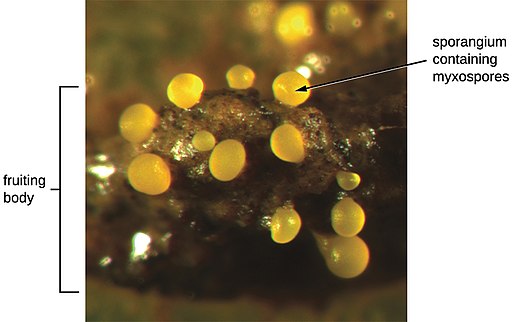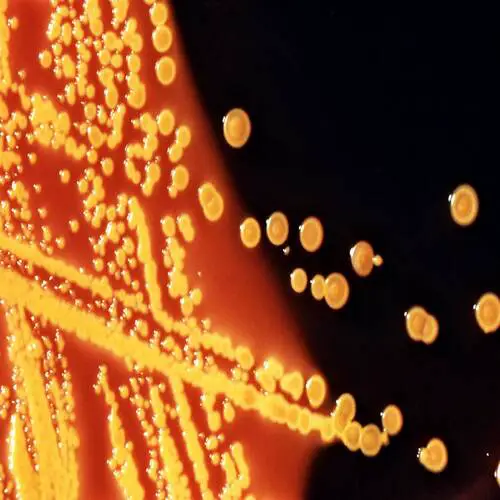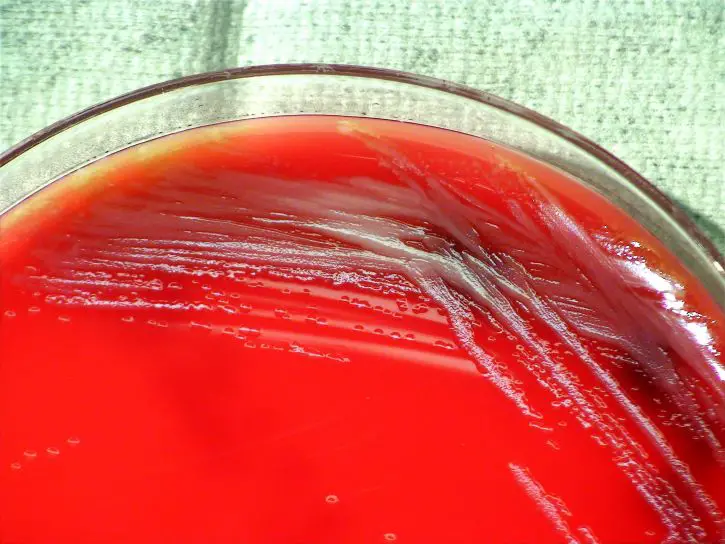Plankton Microscopy
Types & Characteristics
EpiFluorescence
Plankton include a wide variety of living organisms that range from tiny bacterioplankton to gelatinous animals like jellyfish. For most part, these organisms spend their lives drifting on ocean currents since they are unable to swim against ocean currents. As a result, they move with the currents. They are vast and diverse and thus make up a great majority of the living biomass in the ocean.
Types of Plankton
- Phytoplankton - Live closer to the water surface and include various prokaryotes (autotrophs) and eukaryotes (algae)
- Zooplankton - Zooplankton includes metazoa and protozoa that survive by feeding on other plankton
- Bacterioplankton - These are bacteria and archaea that are responsible for breaking down organic material in the ocean
Virioplankton - Studies have identified a group of viruses (virioplankton) to be a dynamic component of plankton. They are divided into bacteriophage (majority) and eukaryotic viruses.
As bacteriophage, these viruses infect and reproduce by infecting bacteria in order to grow and thrive. However, to a lesser extent, they are capable of producing their own food. In their environment, virioplankton play an important role of regulating carbon as well as recycling nutrients.
* The word plankton is derived from the Greek word "Planktos" meaning drifter/wanderer.
Microscopy
While most are too small to be seen with the naked eye, some like the Blue-bottles jellyfish and Moon jellyfish can be seen without the aid of a microscope. Also, it's possible to see tiny plankton move around a sample of water collected from oceans and seas.
These types can also be viewed more easily by using a stereo/dissecting microscope. This simply involves placing a concentrated sample (concentration may be achieved using a centrifuge) on a plastic slide and mounting on the microscope to observe any plankton that may be present. For many others that are too small to be seen with the naked eye, other techniques can be used.
Microplankton under the Microscope
Microplankton include phytoplankton and zooplankton that measure between 20 and 200 micrometers. This includes a variety of ciliates (protistan).
Requirements
- Acid Lugol's fixative
- A sample of seawater
- Standard inverted microscope
- Immersion oil
- Microscope slide
- Polycarbonate membranes
Procedure
For this technique, the ciliates in seawater sample were preserved using acid Lugol's fixative.
- Add 37 percent formaldehyde to 250 ml of the sample (in acid Lugol) and allow to stand overnight. This allows for fixation of organism
- Use glass fixation system to filter 100 mm of the sample. Filtration is achieved by using a 25mm, 8 micrometer black polycarbonate filters that has a 10 micrometer nylon backing filter at low pressure - Using this process will result in an even distribution of cells
- Place the filters on a plain paper to allow the residuals water to wick away for about 30 seconds - Avoid dehydration
- Spread a drop of immersion oil (Cargille Series A) on a glass slide to produce an even layer
- Carefully separate the polycarbonate membrane from the backing filter and place it on the immersion oil layer
- Add another drop of immersion oil on the membrane with the sample and cover with a cover slip
- Mount and view under the microscope (inverted compound microscope)
Observation
Using this technique, students can identify a number of organisms including dinoflagellates, diatoms as well as other ciliates.
Epi-Fluorescence Microscopy
An Epi-fluorescence microscope refers to a fluorescence microscope where the specimen is illuminated from above. The arrangement of the optical components of the microscope is such that the objective serves as the source of light and also collects light from the specimen.
Using this technique, it is possible to observe a number of plankton including
bacteria, phytoplankton and zooplankton.
Bacteria Microscopy (Epi-fluorescence microscope)
Requirements
- Black Polycarbonate membrane; pore size (0.2 micrometer) and 2.5 mm diameter
- Glass filter holder
- Vacuum source (about 25cm Hg vacuum)
- Glass slides
- Cover slips
- 37 percent formaldehyde
- Acridine Orange stock solution
- Immersion oil (non-fluorescent)
- Epifluorescence microscope (with high pressure mercury burner)
- Free-particle water
Procedure
- Using formaldehyde, fix the sample immediately - This involves adding formaldehyde (37 percent) in to 250 ml of the sample.
- Using free-particle water, moisten the filter unit and place the supporting filter (1.2um) and black membrane (0.2um) on top.
- Using ultra pure water, rinse the filter unit funnel and place it on the filters (clamp to fasten)
- Pour a small amount of the sample on the membrane filter and add the Acridine Orange to stain
- After one minute, gently filter the mixture at maximum vacuum (100mmHg). This prevents damage to the cells in the sample
- Spread a drop of immersion oil on a clean glass slide and place the filter on the slide
- Place another drop of immersion oil on the membrane and cover using a cover slip
- View the slide under the microscope and try counting the number of bacteria present
Observation
Under the microscope, the cells will appear to shine giving off orange and green colours.
Phytoplankton Under the Microscope
(Epi-fluorescence Microscope)
Requirements
- Lugol's fixative
- Sedimentation chambers
- Microscope
- Water sample with phytoplankton
Procedure
- Use Lugol's solution to fix the sample
- Add the mixture into a sedimentation chamber (fill to the top)
- Allow the chamber to vibrate in a dark area (away from light)
- Having removed excess volume, mount the chamber using a cover slip
- View under inverted microscope
Observation
Some of the phytoplankton that may be viewed under the microscope include green algae, diatoms and dinoflagellates among others.
Zooplankton under the Microscope
Requirements
- Formalin solution (40 percent formaldehyde)
- Volumetric pipette
- Counting chamber
- Microscope
Procedure
- If the sample is concentrated, dilute using tap water and mix thoroughly
- Using a volumetric pipette (wide-mouth pipette), obtain 1 mL of the sample and add it into a Sedgwick–Rafter chamber
- Place on the microscope and try counting the number of organisms present
When viewed under the microscope, the sample may reveal such zooplankton as microcrustaceans (e.g. cladoceran).
Planktons: Life and Characteristics
Phytoplankton
Phytoplankton may be described as free-floating microscopic plants. This is because they are tiny organisms that are capable of using carbon dioxide and sunlight to produce their own food.
Like other plans that grow on land, phytoplankton have chlorophyll in their cells used for photosynthesis. This allows them to trap sunlight, which is then converted to chemical energy in the presence of carbon dioxide.
Types of Phytoplankton
- Diatoms (e.g., Bacillariophyta)
- Cyanobacteria (e.g., Synechococcales, Spirulina)
- Dinoflagellates (E.g., Noctilucales)
Phytoplankton are very diverse and exist as both prokaryotic (e.g. cyanobacteria) and eukaryotic (algae) forms. This is a big advantage given that phytoplankton are the primary producers in aquatic bodies.
However, some phytoplankton like sapromixotrophs and phagomixotrophs are classified as mixotrophs because they are not only capable of producing their own food through photosynthesis, but also obtain nutrients from organic material present in their environment.
Importance (Aquatic Environments)
As the primary producer, phytoplankton plays a
very important role in the aquatic food web. By feeding other plankton like
zooplankton as well as other small fish, phytoplankton make it possible to feed
other bigger aquatic organism like whales. Therefore, in the absence of
phytoplankton, other higher aquatic organisms would be highly affected and even
die off.
Apart from their importance in the aquatic food web, phytoplankton also play a very important role in the carbon cycle. As earlier mentioned, phytoplankton use carbon dioxide for photosynthesis in order to produce food (chemical energy). In the process, some of the carbon is stored in phytoplankton when they die and settle at the bottom of the sea.
Any change in the growth and amount of these organisms therefore has a direct impact on global atmospheric carbon-dioxide gas and thus on the temperature. Because they carry some of the carbon to the bottom of the ocean when they die, phytoplankton also contribute to the formation of oil.
* While phytoplankton are important, they can cause diseases and even kill both marine life and people. Some of the species have been shown to produce dangerous bio-toxins that result in red tides and algal blooms. When consumed, these toxins can cause serious illnesses and even cause death.
Zooplankton
Zooplankton are a variety of minuscule animals with limited swimming abilities. As such, they are incapable of swimming against the current and thus go where the current takes them.
Unlike phytoplankton that are
capable of manufacturing their own food, zooplankton survive by feeding on
phytoplankton since they lack chlorophyll. The different types of
zooplankton can be grouped on the basis of size and how they develop.
Size - Based on size, zooplanktons are classified as;
- Picoplankton - Picoplankton are the smallest zooplankton that measuring less than 2 micrometers. Examples of picoplankton include Synechococcus, picoeukaryotes and Prochlorococcus.
- Nanoplankton - Nanoplankton may range between 2 and 20 micrometers and include such zooplankton as Pyrrophyta, Xanthophyta and Chrysophyta.
- Microplankton - Microplankton measure between 20 and 200 micrometers and include certain small copepods
- Mesoplankton - Mesoplankton range between 0.2 to 20 mm in size and include euphausids and some larval fish organisms
- Macroplankton - Measuring between 20 and 200 mm, examples of macroplankton include larger crustaceans and jellyfish
- Megaplankton - Megaplankton are over 200 mm in size and include larger jellyfish
Development stage - Apart from size, zooplankton are also classified on the basis of development stage. The two main groups based on development include:
Meroplankton -Meroplankton include zooplankton that are in their larval stage. Later in their development, meroplankton change to such animal as fish, insects and worms among others
Holoplankton - Whereas meroplankton change to other animals, such holoplankton as copepods, pteropods and siphonophores remain zooplankton for the rest of their life
Importance (in Aquatic Environment)
Like phytoplankton, zooplankton also play an important role in the aquatic food web. By feeding primarily on phytoplankton (algae), zooplankton prevent algae from growing out of control.
As already mentioned, changes in the growth of phytoplankton has a direct impact on the global carbon cycle. Therefore, by consuming phytoplankton, zooplankton also play an important role in the regulation process.
Zooplankton are also important food sources for various organisms including planktivorous fish. As such, they play an important role in aquatic food web given that their absence would affect the rest of organisms above them in the food chain.
Bacterioplankton
Bacterioplankton are also a group of plankton. They are primarily prokaryotic, which means that they lack a membrane bound nucleus as well as a number of other organelles.
Some of the bacterioplankton like the blue-green algae are primary producers (they can synthesis their own food through photosynthesis) while others such as various heterotrophic flagellates are primary consumers and survive by consuming organism material present in their environment.
Bacterioplankton has been associated with the uptake of
phosphorous in water thereby playing an important role of controlling
eutrophication, which can result from high phosphorous concentration.
* Eutrophication refers to excessive amounts of nutrients and given minerals in water that can affect oxygen concentration.
Take a further look at Diatoms, Ciliates, Eukaryotes, Prokaryotes, Bacteria, Archaea, Algae, class Actinopoda
Return to Microscope Experiments Main Page
Return from Plankton Microscopy to MicroscopeMaster Home
References
Alexandra Freibott, Lorena Linacre, and Michael R. Landry. 2014. A slide preparation technique for light microscopy analysis of ciliates preserved in acid Lugol’s fixative.
Paul F. Kemp, Jonathan J. Cole, Barry F. Sherr, Evelyn B. Sherr. 1993. Handbook of Methods in Aquatic Microbial Ecology 1st Edition.
Links
Find out how to advertise on MicroscopeMaster!
![Phytoplankton by NOAA MESA Project (http://www.photolib.noaa.gov/bigs/fish1880.jpg [1]) [Public domain], via Wikimedia Commons Phytoplankton by NOAA MESA Project (http://www.photolib.noaa.gov/bigs/fish1880.jpg [1]) [Public domain], via Wikimedia Commons](https://www.microscopemaster.com/images/Phytoplankton_-the_foundation_of_the_oceanic_food_chain.jpg)
![Assorted diatoms by Prof. Gordon T. Taylor, Stony Brook University (corp2365, NOAA Corps Collection) [Public domain], via Wikimedia Commons Assorted diatoms by Prof. Gordon T. Taylor, Stony Brook University (corp2365, NOAA Corps Collection) [Public domain], via Wikimedia Commons](https://www.microscopemaster.com/images/512px-Diatoms_through_the_microscope.jpg)
![Zooplankton by Matt Wilson/Jay Clark, NOAA NMFS AFSC. [Public domain], via Wikimedia Commons Zooplankton by Matt Wilson/Jay Clark, NOAA NMFS AFSC. [Public domain], via Wikimedia Commons](https://www.microscopemaster.com/images/Zooplankton.jpg)




